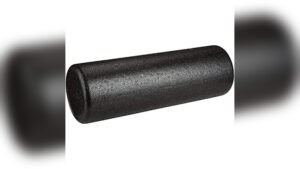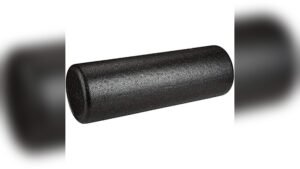PVC yoga mats are not entirely safe. They contain harmful chemicals like phthalates and may release toxic fumes over time.
Yoga practitioners often wonder about the safety of their mats, especially those made from PVC. Polyvinyl chloride, commonly known as PVC, is a type of plastic that offers durability and affordability. However, it contains harmful chemicals like phthalates, which are used to make the material flexible.
These chemicals can pose health risks, especially with prolonged use. PVC mats may also release toxic fumes, particularly when new. For a safer alternative, consider mats made from natural materials like rubber, jute, or cotton. These options are eco-friendly and pose fewer health risks, making them a better choice for your yoga practice.
Credit: www.reddit.com
Table of Contents
ToggleIntroduction To Pvc Yoga Mats
PVC yoga mats are common in the market. Many people wonder if they are safe. This article will explore the details of PVC yoga mats.
What Is Pvc?
PVC stands for Polyvinyl Chloride. It is a type of plastic. PVC is used in many products. It is strong and long-lasting.
Common Uses Of Pvc
PVC is very versatile. It is used in many everyday items. Here are some common uses:
- Pipes for plumbing
- Vinyl flooring
- Credit cards
- Toys
- Yoga mats
People like PVC for its durability. It is also affordable. This makes it popular for many products. PVC yoga mats are popular because they are cheap. But are they safe?
Benefits Of Pvc Yoga Mats
Are you wondering if PVC yoga mats are safe? Let’s discuss their benefits. PVC yoga mats offer a range of advantages that make them popular among yoga enthusiasts. This section will focus on the key benefits of PVC yoga mats.
Durability
PVC yoga mats are known for their impressive durability. They can withstand intense workouts and daily use without showing significant wear and tear. This makes them a great investment for those who practice yoga regularly.
Even after months of use, the mat remains intact. It resists scratches, tears, and dents. This durability ensures a long-lasting product life, making it a cost-effective choice.
Affordability
One of the most appealing benefits of PVC yoga mats is their affordability. Compared to other materials, PVC mats are budget-friendly. They offer great value for their cost, making them accessible to a wide audience.
Here is a simple comparison table:
| Material | Price Range |
| PVC | $10 – $30 |
| Rubber | $40 – $100 |
| Cork | $50 – $120 |
As you can see, PVC mats are the most economical option. This allows more people to start their yoga journey without breaking the bank.
Potential Health Risks
Are PVC yoga mats safe? It’s a question many yogis ask. Let’s explore the potential health risks associated with these mats. Understanding these risks can help you make an informed choice.
Toxic Chemicals
PVC mats contain harmful chemicals. These include phthalates, lead, and cadmium. These chemicals can cause health problems. Phthalates are used to make the mat flexible. They can affect the endocrine system. Lead and cadmium are heavy metals. They can cause serious health issues over time.
Here is a table summarizing the chemicals and their effects:
| Chemical | Potential Health Risk |
| Phthalates | Endocrine disruption |
| Lead | Neurological damage |
| Cadmium | Kidney damage |
Allergic Reactions
Some people are allergic to PVC mats. They can experience skin irritation. Symptoms include itching, redness, and rashes. In severe cases, it can cause respiratory issues. This is due to the chemicals in the mat. Always test a new mat before full use.
Here are some common symptoms of allergic reactions:
- Itching
- Redness
- Rashes
- Breathing difficulties
If you experience any of these symptoms, stop using the mat. Seek medical advice if needed.
Environmental Impact
Are PVC yoga mats safe for the environment? This question concerns many yoga practitioners. Understanding the environmental impact of PVC yoga mats involves examining their production process and disposal issues.
Production Process
The production of PVC yoga mats involves several steps. The main ingredient is polyvinyl chloride, a type of plastic. Manufacturers produce PVC by polymerizing vinyl chloride monomers. This process can release harmful chemicals. These chemicals include dioxins and phthalates. Dioxins are toxic and can affect human health. Phthalates are used to make PVC flexible. These substances can leach into the environment.
Producing PVC also requires a lot of energy. High-energy consumption contributes to carbon emissions. PVC production is linked to environmental pollution. Factories may release pollutants into the air and water.
Disposal Issues
Disposing of PVC yoga mats poses significant challenges. PVC is not biodegradable. This means it does not break down naturally. Discarded PVC mats can remain in landfills for hundreds of years. Over time, they can release harmful chemicals into the soil and water.
Recycling PVC is difficult and costly. Few facilities can handle PVC recycling. Most PVC mats end up in landfills or incinerators. Incineration can release toxic fumes into the atmosphere. These fumes contribute to air pollution and climate change.
To reduce environmental impact, consider alternatives. Mats made from natural materials are a better choice. Look for mats made from rubber, jute, or cork. These materials are biodegradable and eco-friendly.
Comparing Pvc To Other Materials
Yoga mats come in various materials, each with unique properties. PVC (Polyvinyl Chloride) is popular but has safety concerns. Let’s compare PVC to other common materials like Natural Rubber, TPE, and EVA.
Natural Rubber
Natural rubber mats are eco-friendly and provide excellent grip. They are biodegradable and safe for the environment. These mats are also free from harmful chemicals. Natural rubber mats offer great durability and cushion. They can be heavier and have a distinct smell. People with latex allergies should avoid these mats.
Tpe And Eva
TPE (Thermoplastic Elastomers) mats are a newer alternative. They are lightweight and easy to carry. TPE mats are also recyclable and free from PVC, latex, and harmful chemicals. They offer good cushioning and durability. TPE mats can be less grippy compared to natural rubber.
EVA (Ethylene Vinyl Acetate) mats are another option. They are lightweight and offer decent cushioning. EVA mats are also free from PVC and latex. They are less durable compared to natural rubber and TPE. EVA mats can be prone to wear and tear over time.
| Material | Eco-Friendly | Grip | Cushioning | Durability | Weight |
| PVC | No | Good | Good | High | Medium |
| Natural Rubber | Yes | Excellent | Good | High | Heavy |
| TPE | Yes | Moderate | Good | High | Light |
| EVA | Yes | Moderate | Moderate | Low | Light |
- Natural Rubber: Eco-friendly, excellent grip, biodegradable.
- TPE: Lightweight, recyclable, free from harmful chemicals.
- EVA: Lightweight, decent cushioning, less durable.
Credit: www.livestrong.com
Safety Measures For Pvc Mats
Are you concerned about the safety of your PVC yoga mat? Don’t worry. Following proper safety measures can make your PVC mat safe for use. Below are the best practices to ensure your mat is safe.
Proper Ventilation
New PVC mats often have a strong smell. This is due to chemicals used in manufacturing. Always unroll your new mat in a well-ventilated area. Let it air out for a few days. If possible, place it outdoors but away from direct sunlight.
Cleaning Tips
Keeping your PVC mat clean is essential. It helps maintain its safety and longevity. Follow these cleaning tips:
- Use a mixture of warm water and mild soap.
- Avoid harsh chemicals or abrasive scrubbers.
- Gently wipe the mat with a soft cloth.
- Rinse thoroughly with clean water.
- Allow the mat to air dry completely before rolling it up.
For deep cleaning, you can soak the mat in a bathtub with water and a few drops of soap. Rinse well and let it dry.
Alternatives To Pvc Yoga Mats
Many people question the safety of PVC yoga mats. PVC or polyvinyl chloride can be harmful. Luckily, there are safer alternatives. These options are better for health and the environment.
Eco-friendly Options
Eco-friendly yoga mats are great alternatives. These mats use natural materials. This makes them safe and green.
- Natural Rubber: This material is biodegradable. It provides good grip and cushioning.
- Jute: Jute is a plant fiber. It is strong and eco-friendly.
- Cork: Cork is harvested from tree bark. It is renewable and offers good traction.
- Organic Cotton: This material is soft and breathable. It is also biodegradable.
These mats protect our planet. They are free from harmful chemicals. Choose these to practice yoga safely.
Diy Mats
DIY mats can be a fun project. They allow customization and creativity.
- Old Towels: Use thick towels to create a mat. Sew several layers together for extra padding.
- Rug Pads: Cut rug pads to the desired size. These offer good grip and comfort.
- Recycled Materials: Use old clothes or sheets. Stitch them together to make a unique mat.
DIY mats reduce waste. They recycle old items into something useful. This option saves money and helps the environment.
| Material | Benefits |
| Natural Rubber | Biodegradable, good grip |
| Jute | Strong, eco-friendly |
| Cork | Renewable, good traction |
| Organic Cotton | Soft, breathable |
Credit: yogipeaceclub.com
Final Thoughts
Are PVC yoga mats safe? This question concerns many yoga enthusiasts. Understanding the benefits and risks can help make an informed choice.
Balancing Benefits And Risks
PVC yoga mats offer several benefits. They are affordable, durable, and provide excellent grip. These qualities make them popular among yoga practitioners. However, there are also risks to consider.
Health Risks: PVC mats can release harmful chemicals. These include phthalates and dioxins. These chemicals may cause health issues. For people with sensitive skin, PVC mats might cause irritation.
Environmental Impact: PVC mats are not eco-friendly. They are difficult to recycle and can harm the environment. Some mats end up in landfills, taking years to decompose.
Making An Informed Choice
When choosing a yoga mat, consider both benefits and risks. Here are some tips to help you decide:
- Look for phthalate-free PVC mats. These are safer for your health.
- Check for mats made from eco-friendly materials. Options include natural rubber or jute.
- Consider your budget and yoga needs. Balance cost with safety.
Here’s a quick comparison table:
| Material | Benefits | Risks |
| PVC | Affordable, durable, good grip | Health risks, environmental impact |
| Natural Rubber | Eco-friendly, good grip | More expensive, heavy |
| Jute | Eco-friendly, natural feel | Less cushioning, may wear out |
By weighing these factors, you can make the best choice for your practice. Prioritize safety and sustainability. A well-chosen mat enhances your yoga experience.
Frequently Asked Questions
Are Pvc Yoga Mats Toxic?
PVC yoga mats can release harmful chemicals like phthalates. These chemicals can be toxic and affect your health. Opt for eco-friendly alternatives.
How Do I Know If My Yoga Mat Is Pvc?
Check the label or product description. PVC mats are often labeled as vinyl. They have a distinct plastic feel and smell.
Can I Be Allergic To Pvc Yoga Mats?
Yes, some people may experience allergic reactions. Symptoms can include skin irritation or respiratory issues. Consider hypoallergenic mats.
Are There Safer Alternatives To Pvc Mats?
Yes, safer alternatives include mats made from natural rubber, jute, or cork. These materials are eco-friendly and non-toxic.
Conclusion
Choosing the right yoga mat can impact your practice and health. PVC mats are durable but may contain harmful chemicals. Consider eco-friendly alternatives for a safer and greener option. Prioritize your well-being by researching materials and making informed decisions. Your yoga journey deserves the best support.
Featured Image by Gettyimages(Credit:Crispin La Veliente)







